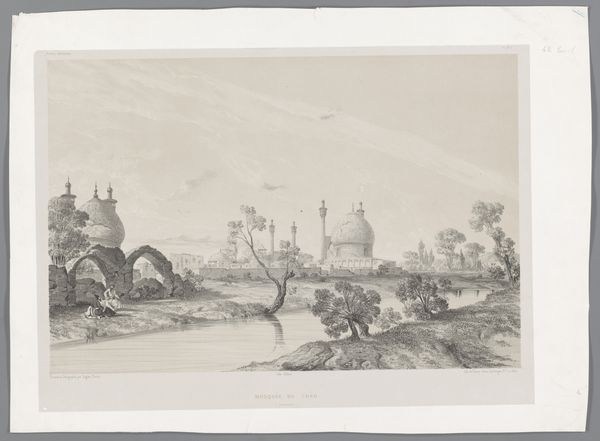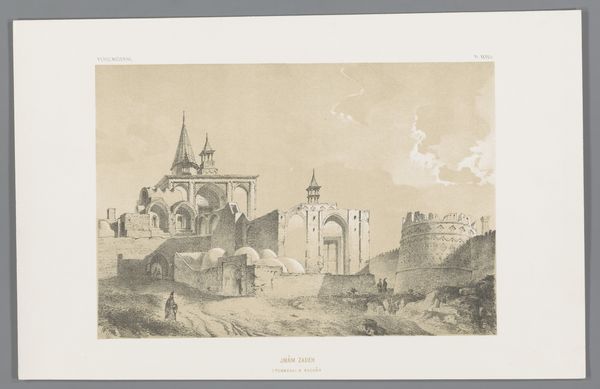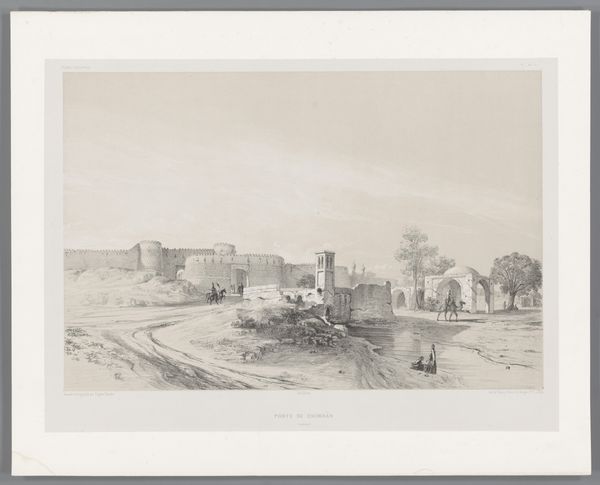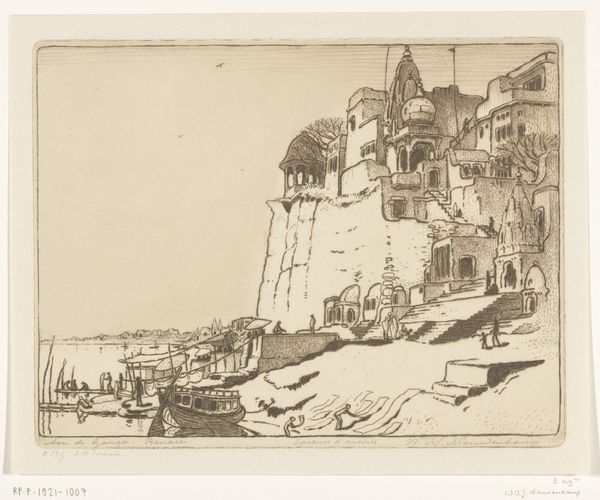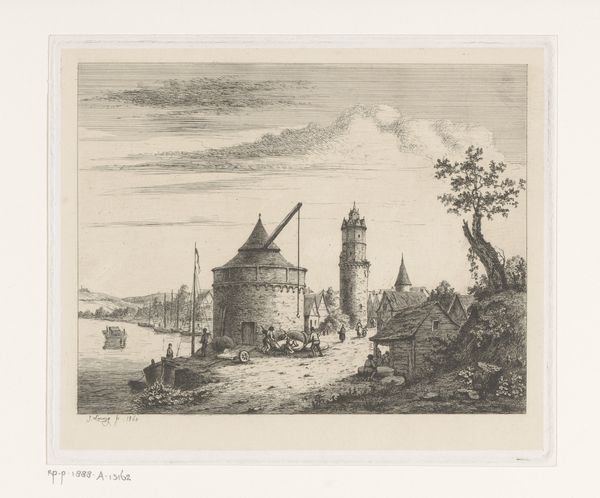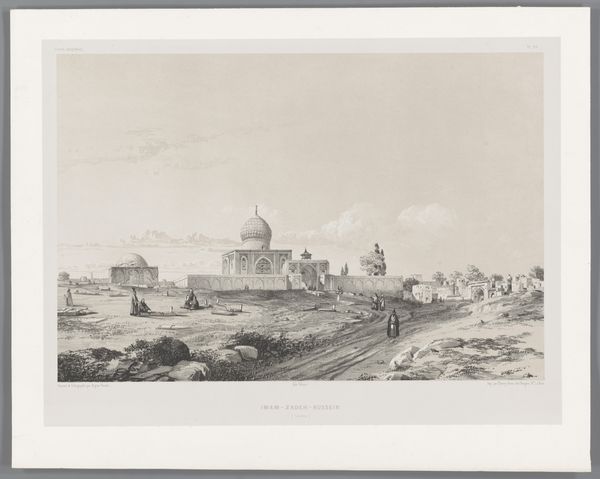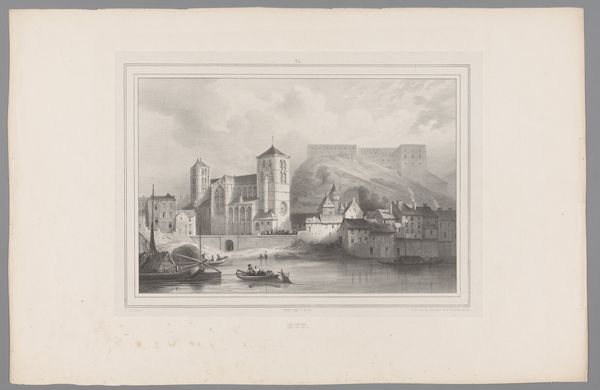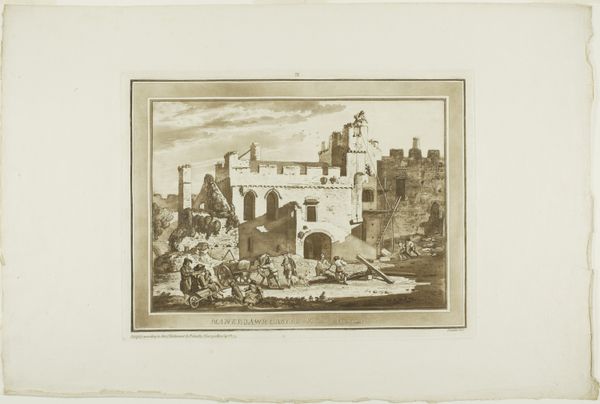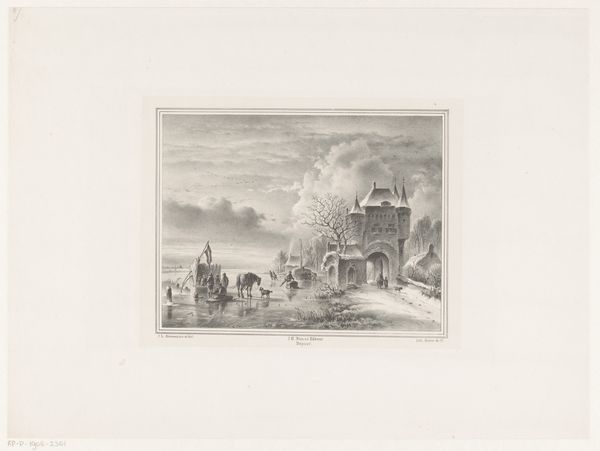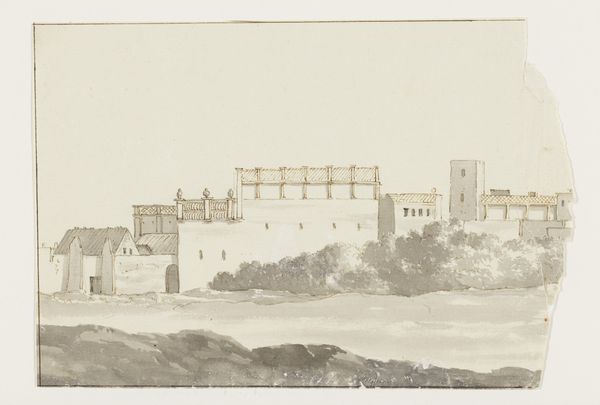
drawing, print, ink
#
drawing
# print
#
landscape
#
ink
#
orientalism
#
cityscape
#
watercolour illustration
Dimensions: height 448 mm, width 621 mm
Copyright: Rijks Museum: Open Domain
Editor: This is "View of Kangavar," a drawing and print by Eugène Flandin, dating from between 1843 and 1854. The scene, rendered in ink and watercolour illustration, exudes a sense of quiet observation. The stark contrast and architectural details lend the piece a somewhat nostalgic feel. What aspects of this Orientalist cityscape strike you most? Curator: Well, the magic of Flandin lies in how he invites us into this foreign space, doesn't he? I think it's the contrast of stillness and potential energy. Look at the people sitting calmly in the foreground versus the hint of bustling activity just beyond that archway. Does it suggest something about the East for Western viewers at that time? The romanticism of it all, maybe? Editor: Yes, I see that now. There's a sense of mystery about it. The quietness really pulls you in, almost like you're not supposed to be seeing the hidden, active scenes. I wonder how accurate of a representation it really is... Curator: Accuracy and representation...delicious questions! Isn't there always a sliver of the artist projected into their subject? But in Flandin's case, think of the incredible skill involved. To render textures, light, and shadow with such fine lines…It’s technically brilliant and evokes a dreamlike atmosphere, blurring the line between fact and fiction. Editor: That’s a good point. So, while we may never truly understand the scene beyond his translation of it, we can appreciate his technique. It makes you wonder about the power and limitations of visual storytelling. Curator: Exactly! Flandin offers a visual whisper – beckoning you closer to contemplate. Ultimately, maybe art is at its finest when it doesn't answer, but instead prompts richer questions within ourselves? Editor: I think I agree! I'm glad I looked a bit closer.
Comments
No comments
Be the first to comment and join the conversation on the ultimate creative platform.

